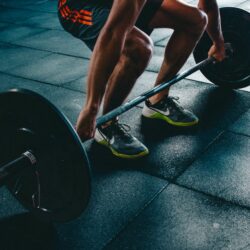Women’s softball- Athleticism is the key to separation
As I go out to the facility here at Champion’s QUEST each afternoon I always take a moment to look up at all the flags that hang on our ceiling, with all the prestigious schools our athletes have gone on to attend. I use this as my check in moment each day to remember what the end goal is, and to remind myself that each and every day, every hour, along the journey counts for these young athletes. One thing that I also frequently ponder, is just how many womenÕs softball flags hang on our ceilings, and the common denominator between what we do, and the success they have. To me, the answer has become abundantly clear.. They become superior athletes in a sport that has primarily focused its efforts purely on skill development.
 I revel in the amount of work that young softball players put in on a daily and weekly basis. These softball athletes, especially at the club ranks, put in countless hours of practice and then frequently top off their full practice weeks with triple headers on the weekend. There is no question in my mind that Softball Athletes are some of the hardest workers in youth athletics, but somewhere along the way athleticism development has been put on the back burner. Here are my three reasons why I believe building superior softball specific athleticism helps these young women break away from the pack.
I revel in the amount of work that young softball players put in on a daily and weekly basis. These softball athletes, especially at the club ranks, put in countless hours of practice and then frequently top off their full practice weeks with triple headers on the weekend. There is no question in my mind that Softball Athletes are some of the hardest workers in youth athletics, but somewhere along the way athleticism development has been put on the back burner. Here are my three reasons why I believe building superior softball specific athleticism helps these young women break away from the pack.
1. Injury Prevention– First and foremost our objective is to make sure that the girls are strong, stable, coordinated, and spatially aware. Female athletes are increasingly at risk for suffering ACL injuries, more specifically, 4 to 6 times more likely than men! The source is two fold. First American culture has not placed enough emphasis on teaching women athletes to be in control of their movement patterns. The emphasis has largely been placed on skill development which does not help them prepare their bodies for the wear and tear associated with change of direction, cutting movements, landing from a jump, and deceleration. The training we put the girls through includes a lot of neurological, agility, and mechanical based development. By doing this we are educating the young women on how to move properly, and how to self correct mistakes. Second, women athletes do not receive enough strength training, which has a direct role in the development of their joints, connective tissues, and lower body muscle groups. The keys to preparing them physically and structurally will include developing their glutes, hamstrings, and knee stabilizers, specifically for lateral and rotation based movements.
 2. Throwing Velocity and Arm Health– Softball is behind the curve in developing elite throwing athletes. As an American culture we are completely frontside dominant. This means that our accelerators (engines) completely and utterly over power our decelerators (brakes). Our body is smarter than we give it credit. I test this rotator cuffbalance on each throwing athlete that comes in, and the average imbalance is 4:1!! This means that in nearly every athlete, the engine is 4 times stronger than the brakes! What does this mean? The athlete is guaranteed to be sacrificing velocity they could already have!!!! By focusing on strengthening the brakes (Posterior strength, backside rotator cuff, scaps, rhomboids, etc.) the athlete will tap into velocity they did not even know they had! Furthermore, they will ensure that they are bulletproof from nagging injuries and arm health issues.
2. Throwing Velocity and Arm Health– Softball is behind the curve in developing elite throwing athletes. As an American culture we are completely frontside dominant. This means that our accelerators (engines) completely and utterly over power our decelerators (brakes). Our body is smarter than we give it credit. I test this rotator cuffbalance on each throwing athlete that comes in, and the average imbalance is 4:1!! This means that in nearly every athlete, the engine is 4 times stronger than the brakes! What does this mean? The athlete is guaranteed to be sacrificing velocity they could already have!!!! By focusing on strengthening the brakes (Posterior strength, backside rotator cuff, scaps, rhomboids, etc.) the athlete will tap into velocity they did not even know they had! Furthermore, they will ensure that they are bulletproof from nagging injuries and arm health issues.
3. Lower Body Power– Combine the mechanical layering (teaching the girls how to accelerate properly) with lower body power and they are on their way to becoming standout athletes on the field! Lower body power will provide the basis for increasing the girls abilities to hit the ball harder, throw the ball harder, and run faster. This very specific training will include plyometrics, resisted jumping, assisted jumping, and a number of other neurological based activation exercises that teach the girls how to engage their muscles faster and with more force production. Another major focus of power development is glute strength, because of its direct role in hip extension.
Kyle Richter, CSCS, USAW, TPI
USC Baseball Alumni, BA Human Performance

